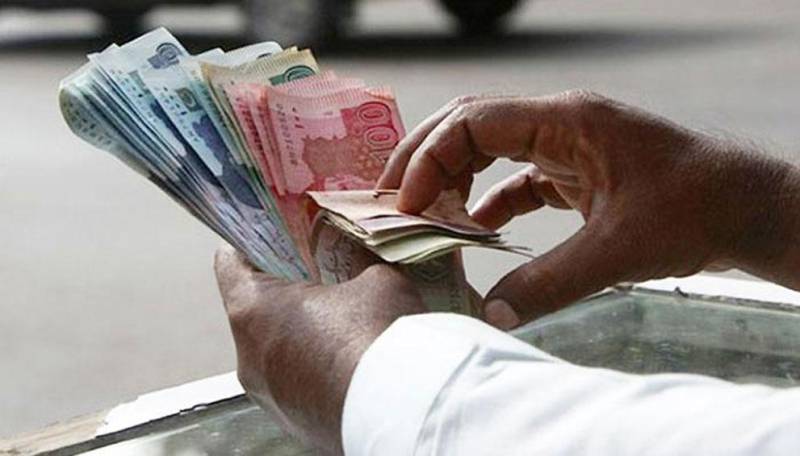ISLAMABAD - Although economic fundamentals are almost same and foreign exchange reserves are depleting, the Pakistani currency is yet appreciating from last few days mainly due to the revival of International Monetary Fund)’s loan programme, expected funds from friendly countries and reduction in imports bill.
The rupee, which had plunged to record low of 240 against dollar in later July, has surprisingly maintained its upward trend for almost last couple of weeks. Earlier, in last month (July), it had slumped 34 percent reaching around over Rs 240 against dollar, suffering its biggest monthly fall since five decades. The dollar value had increased massively mainly after the July 17 by-elections in Punjab, as it was considered that the ruling coalition government after facing defeat in the largest province would not complete its term and would announce general elections.
However, later, with the satisfactory reply from the IMF which said that Pakistan met the preconditions for approval of loans by the end of this month has appreciated the local currency. Local currency was hovering around 213.9 in interbank and 210 against US dollar in open market on Tuesday. Rupee has been the best performing currency in the world so far this month.
The currency is still gaining its value despite country’s foreign exchange reserves held by the State Bank of Pakistan (SBP) fell to their lowest level in almost three years at $7.83 billion as of August 5. The foreign reserves held by the SBP had dropped by $555 million due to increased debt payments and a lack of external financing. The central bank’s data showed reserves plunged to their lowest level since October 2019. Similarly, the economic fundamentals are also almost same.
Officials of Ministry of Finance, SBP, economic experts and currency dealers believed that announcement from the IMF to approve loan for Pakistan later this month, expected inflows from friendly countries, reduction in imports bill and SBP action against currency dealers involved in speculations are the main reasons for currency appreciation. They are expecting that rupee would further strengthen after the approval of loan tranches of $1.17 billion from the IMF by the end of this month (August). Meanwhile, Saudi Arabia, the United Arab Emirates, Qatar and China confirmed to the IMF that they had completed arrangements for $4 billion in bilateral financing to Pakistan.
Finance Minister Miftah Ismail said that rupee value has rebounded after massive reduction in imports in the month of July. Talking to the media, he said that it was always his belief that once the imports fall, the rupee will ultimately strengthen. “We imposed a ban on non-essential commodities.” He said that the government has brought the country’s imports almost at par with exports and remittances. He said that the dollar was in the government’s control after July 17, and it would gradually depreciate against the rupee. He further said that the government had started to control local currency when it was at around Rs239 against dollar.
Dr Khaqan Najeeb, former advisor Ministry of Finance, said the country is yet again in the midst of a balance of payments (BoP) challenge. The current situation can be best understood as a short-term liquidity crunch driven by a host of endogenous circumstances, turbocharged by external shocks, especially commodity price hikes. Political uncertainties have restricted a more timely response which increased the severity of the situation.
Talking to The Nation, Dr Khaqan explaining the rise and fall of the rupee said some specific factors created the dollar liquidity crunch and the resultant weakness of the rupee which have started to unwind and thus strength in the rupee.
These are resumption of Pakistan’s programme supported by the IMF which opens doors to additional disbursements by multilaterals and bilateral creditors; global commodity prices are receding; imports are moderating in July after a hefty June; and local demand of petroleum products appears to be declining as price pass-throughs are taking effect, he said.
Dr Khaqan concluded that in addition, exporters have liquidated their positions which has increased supply of dollars and strengthened the rupee.
A senior official of the SBP informed that there were several factors behind currency depreciation in July this year. He explained that first of all the dollar value was increasing throughout the world, which has also impacted the local currency of Pakistan. Secondly, he said that market ‘sentiments’ have also played role especially after the by-elections in Punjab on July 17 that created uncertainty. Third, the import bill in June had ballooned to $7.5 billion. “However, things had started changing soon after IMF said that Pakistan had met all prior actions indicating it will approve loan tranche for Pakistan,” he said and added that things would further improve after country’s foreign exchange reserves stabilize by receiving inflows from IMF and friendly countries.
Meanwhile, Chairman Exchange Companies Association of Pakistan (ECAP) Malik Bostan informed The Nation that rupee value would appreciate to Rs180 to Rs185 against dollar after receiving loan tranches from the IMF and inflows from the friendly countries. He said that the dollar value had increased mainly due to the political uncertainty after 17th July by-elections in Punjab where ruling coalition government had faced defeat. However, things had started improving after IMF’s announcement to approve loan tranches for Pakistan by the end of this month.
Later, the friendly countries had announced financial support for Pakistan and the government controlled the imports, which helped in currency appreciation, he added.






